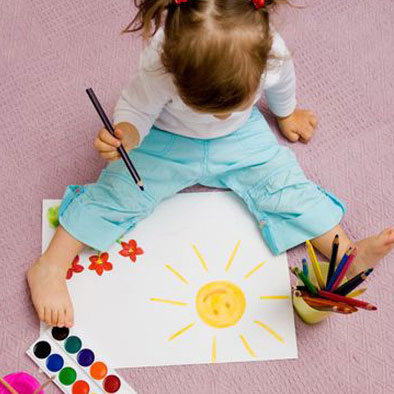
What is Occupational Therapy?
Pediatric Occupational Therapy is a specialty within healthcare focused on prevention, intervention, and rehabilitation. Occupational Therapy involves the therapeutic use of tasks and play activities to improve and develop a child's or adolescent's abilities and skills for better performance at home and school.
Additionally, Occupational Therapy aims to identify and assess various dysfunctional behavioral elements in children using scientific methods and approaches to develop their sensory-motor functions.
Occupational Therapy is highly engaging for children, as it is not structured like a lesson; instead, it uses play to help children improve their skills in a specially designed space with abundant materials and toys. Before a child starts a therapeutic program, an initial assessment is necessary, followed by goal setting and the creation of an individualized intervention plan. The evaluation typically takes place over two 45-minute sessions.
Some of the goals of pediatric occupational therapy include:
- Enhancing motor coordination.
- Supporting normal development.
- Building the child's self-confidence and socialization skills.
- Helping to overcome fears.
Pediatric occupational therapy is applied in addressing difficulties in the following areas:
- Motor skills
- Sensory processing
- Daily living skills
- Behavior
- Cognitive and perceptual functions
- Social skills
When Does a Child Need Occupational Therapy?
According to the American Occupational Therapy Association, you should seek an evaluation from an Occupational Therapist if your child shows a combination of the following difficulties:
- Has difficulty with self-care tasks
- Is clumsy with gross motor activities (trips over obstacles, has poor balance, frequently falls, struggles with ball games)
- Has low muscle tone, appears weak, and has limited stamina
- Gets easily lost in unfamiliar spaces
- Struggles to judge body position in space (bumps into things easily)
- Frequently breaks toys
- Avoids playground equipment (swings, trampolines, etc.)
- Has poor fine motor control, finds it difficult to color within lines, complete puzzles, cut with scissors, or manipulate small objects
- Reverses letters and numbers, doesn’t leave space between letters and words when writing
- Struggles to hold a pencil correctly
- Writes with excessive pressure or very lightly, has poor handwriting
- Tires easily with schoolwork
- Has difficulty following verbal instructions
- Needs more practice than other children to learn new tasks
- Is hyperactive, struggles to sit still
- Is passive, withdrawn
- Does not explore their environment
- Seems not to listen when spoken to
- Easily distracted or overly focused on one activity, making it hard to transition to another
- Has low self-confidence
- Has sleep difficulties
- Has difficulties with eating, gets excessively messy, or avoids certain basic foods
- Is overly sensitive to smells, tastes, noises, or touch
- Avoids daily grooming activities unusually, like bathing, brushing hair, brushing teeth, or nail trimming
- Dislikes hugs and kisses
- Has difficulty making friends of the same age
- Does not play with age-appropriate toys
- Struggles to understand the structure and purpose of a game
- Shows noticeable delay in speech and language, with difficulty articulating sounds
Check if your child needs occupational therapy by completing the checklist.

